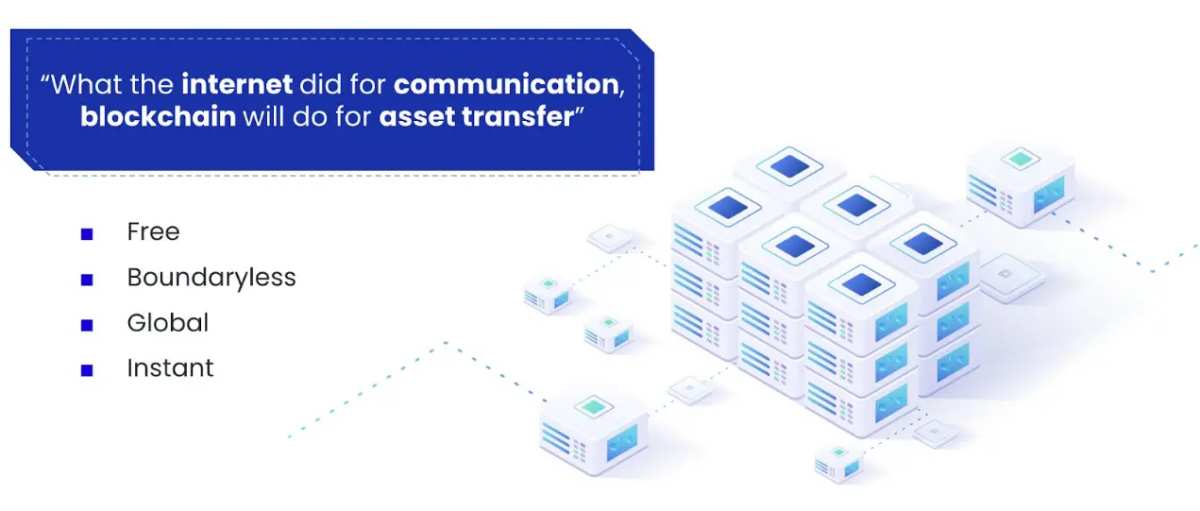After Bitcoin’s new high dominates the headlines, how can one quickly explain cryptocurren
October 9, 2025
Author: Jeff Dorman, Chief Investment Officer of Arca
Compiled by: Felix, PANews
As $Bitcoin (BTC.CC)$ With new highs being reached and cryptocurrencies sweeping through Wall Street and Washington, now is a good time to explain cryptocurrency investments to those around you again. Most “industry experts,” crypto key opinion leaders (KOLs), and mainstream media do a poor job of explaining this asset class to new investors, and the constant misinformation discourages rather than inspires more people.

For nearly a decade, individuals have been engaging with new cryptocurrency investors, and the explanation below resonates most with them because it elucidates cryptocurrency investment in terms that investors can understand. Even those with preconceived negative views will grasp the industry after reading the following explanation.
Therefore, if you want to try explaining blockchain to the general public again, here is the simplest (and fastest) explanation I have found.
Beginner’s Guide: Understand Blockchain in 5 Minutes
-
The internet enables you to communicate instantly, without borders, and at no cost.
-
Blockchain allows you to send assets instantly, without borders, and at no cost.

The first asset sent via blockchain was a completely fictional crypto asset called Bitcoin (BTC), which was transferred through the newly created Bitcoin blockchain. Bitcoin is the greatest anomaly/smokescreen in investment history. Its success is miraculous and unique, and should not be studied or applied to anything else. Although Bitcoin and the Bitcoin blockchain were the first pioneers, it does not mean that it is the only blockchain or asset that can be sent in a similar manner. Bitcoin demonstrates one single use case of this technology, but not the only use case. Similarly, SPY was the first exchange-traded fund (ETF) in the United States, but many other products have since been packaged into ETFs.
Other blockchains, such as smart contract platforms like Solana and Ethereum, are more flexible than the Bitcoin blockchain, allowing for the creation and transfer of other assets. In fact, think of smart contract platform protocols as app stores where anyone can develop applications. Just as your app store provides access to banking, gaming, maps, collectibles, and social apps within the iOS or Android operating systems, your smart contract platform protocol gives you access to banking (DeFi, stablecoins), gaming (Polymarket), collectibles (NFTs), maps (Hivemapper), and social (Pump.Fun) blockchain applications.
-
Crypto Applications = Companies
-
Smart contract protocol = App store

A blockchain has its own token, just as Apple and Google have their own stocks. However, many of the applications within these platforms also issue their own tokens, which can serve as a form of quasi-equity for that business if the tokenomics are designed properly. This is no different from how many public companies with iOS or Android apps have their own stock.
These applications on your phone create value for Apple or Google, just as these crypto applications create value for the smart contract protocol blockchains they are built upon. When the applications are used (generate revenue), both the stocks (or tokens) of the application company and the operating system/blockchain appreciate in value. Of course, since any asset can be created out of thin air and transferred via blockchain, there will inevitably be some ‘junk’ assets (such as meme coins), or assets with loose ties to a company but no real value drivers for the token itself (such as XRP). Tokens come in various forms, largely depending on who issues them and how the tokenomics are structured.
But won’t most crypto startups fail? Of course they will, just as the “dot-com bubble” gave rise to all sorts of startups, most of which eventually fizzled out. Similarly, most native crypto blockchains and applications will also fail. However, we are nearing the end of the “.-crypto” phase (where all investable tokens were issued by emerging crypto firms) and entering a new phase where century-old established companies will adopt blockchain technology and issue tokens. Today, no one refers to a company as an “internet company (.com)” anymore because every company is an “internet company (.com).” Every enterprise operates online. Walmart, JPMorgan, and Domino’s Pizza are now internet companies, even though they existed before the internet; they were not born out of the internet but grew through it. The same will soon be true in the crypto space.
Approximately 99% of global assets (stocks, bonds, and real estate) are not yet transferred via blockchain. However, these assets are likely to be tokenized and transferred via blockchain in the near future, replacing many of the meaningless crypto assets that currently exist.

Today, companies can tokenize existing assets such as stocks and bonds or issue new tokens as hybrid instruments. In the future, every company, university, municipality, celebrity, organization, and sports team will inevitably issue their own tokens, which could become a third type of asset in their capital structure.
-
Stocks = Claim on cash flows
-
Bonds = Claim on assets
-
Tokens = Hybrid claim consisting of a share in revenue growth and a loyalty rewards card used within the company’s ecosystem

These tokens often represent the most powerful mechanisms for capital formation and customer acquisition created to date, as they unite all customers and stakeholders, turning them into promoters and loyal users. Tokens are both a way to benefit from the success of a company and a medium of exchange used for its services. This is fundamentally different from today’s corporate structures, where investors and customers are often at odds with each other.
-
The shareholders of McDonald’s are not its customers, and the customers of McDonald’s are not its shareholders.
-
Uber drivers and passengers cannot benefit from Uber’s success.
-
Delta Air Lines SkyMiles members do not care about Delta’s profits or growth and therefore will not contribute to its development; Delta shareholders, in turn, do not care about customer experience.
-
Content creators do not benefit from the success of Twitter and Instagram.
-
Chefs and delivery drivers do not benefit from DoorDash’s success.
Tokens can immediately change this situation. Take Binance or Hyperliquid as examples — customers of these exchanges are early token holders (through trading or airdrops). You can use HYPE and BNB tokens as collateral for trading on the exchanges and profit from their growth through token buybacks. As a result, customers effectively become quasi-equity holders, benefiting from the company’s financial success, which drives increased usage of the company’s products, higher revenue, and consequently, an increase in token prices. But as a customer of its product, you can also benefit from holding HYPE or BNB tokens (through discounts, collateral, and paying gas fees on their blockchains). This is a perfect hybrid model that aligns all stakeholders immediately and transforms customers into loyal users and promoters.
This envisions a world where your investments and payments could be the same asset. For example, using TSLA stock to buy a Tesla car or AMZN stock to pay for your Amazon purchases.

This creates an extremely simple investment thesis for the next five years, eliminating much of the ‘nonsense’ in crypto investing.
Investment Philosophy
Blockchain technology has proven highly efficient in asset transfers and trading, but most of the world’s popular assets (stocks, bonds, real estate) are currently not tradable on the blockchain (mainly due to regulatory and workflow issues). As barriers between crypto-native assets and traditional financial assets break down, more tokenized assets will be issued, transferred, and traded on-chain.
The beneficiaries will be those specific smart contract platform protocol blockchains (Layer 1) that support such growth and transactions, the DeFi applications built on these chains, the stablecoins and stablecoin providers on these chains, as well as a select few applications in niche areas like gaming and artificial intelligence that help users navigate the chain. However, it is difficult to determine which chains will prevail, as currently almost no assets globally are on-chain. If large asset issuers such as the U.S. government, Walmart, JPMorgan, or Apple were to suddenly decide to issue assets on a particular Layer 1, that L1 would overnight become the most important blockchain.
The true potential of blockchain has yet to be seen by the outside world, as most global assets have not been integrated into blockchain systems. So far, everything that has occurred in the blockchain space has largely been experimental, serving as a trial run before the arrival of real giants—stocks, bonds, real estate, and new tokens issued by companies, universities, municipalities, sports teams, and more.
Therefore, although crypto traders often indulge in short-term trading, chasing flashy yet worthless tokens (such as meme coins), the concept of long-term investment revolves around a mundane, universally accessible, and permissionless financial system—one that can make investment, banking, and spending more efficient and transparent.
Editor/Doris
Search
RECENT PRESS RELEASES
Related Post



